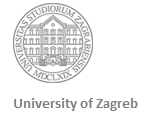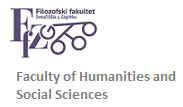Course title: Translation Exercises
Instructors: Tea Raše
ECTS credits: 5
Status: mandatory
Semester: 6
Exam: continuous assessment
Enrolment requirements: CEL3 and Analysis of English Texts
Course description: Translation of general-type texts from English into Croatian and from Croatian into English. Through individual translation and analysis of translated texts (their own and other) the students will be introduced to basic translation procedures, as well as to key problems in translation from English into Croatian and from Croatian into English. Most important translation tools will be explored.
Objectives: The aim of the course is for students to acquire insight into basic translation procedures through practical experience, and to master basic translation skills. The students will learn to use the most important translation tools.
Course requirements: The students must attend two 1.5-hour sessions a week. One is devoted to the translation from English into Croatian, the other to the translation form Croatian into English. The students must attend all sessions (they are allowed to miss not more than three). The students will take two written continuous assessment tests and those who pass these two tests will not have to take the final exam. Those who fail to pass one or both continuous assessment tests will have to take the final exam. The final grade is based on continuous assessment which includes regular attendance (maximum of three absences), preparation for and participation in class, timely submission of assignments and obligatory sitting for midterm and endterm exams. E-learning platform Omega will be used as well, and the students must enrol in the platform if the instructor asks them to do so.
Week by week schedule:
1. INTRODUCTION TO TRANSLATION
– introduction to the course requirements, contents and objectives
– introduction to the Omega e-learning platform
– discussion
– which are the basic obstacles a translator faces?
– which kinds of knowledge and skills a translator needs?
– how can these be developed?
– which aids are necessary to the translator?
3. FIRST TEXT: ENGLISH INTO CROATIAN
– a newspaper article (for example from The Economist, The Times etc.) – topic: culture (cultural event, review of a play, book or film; lifestyle, entertainment, etc.)
– discussion about translation specifics of this type of text and area: style, range, readers, cultural elements and translation strategy
– discussion about concrete problems in the text and possible solutions
5. SECOND TEXT: ENGLISH INTO CROATIAN
– a newspaper article – topic: politics (analysis of a current event)
– discussion about problems related to the comprehension of such texts and the necessity that a translator follows news; specifics of the vocabulary and style; cultural differences between political systems
– discussion about concrete problems in the text and possible solutions
7. THIRD TEXT: ENGLISH INTO CROATIAN
– a newspaper article – topic: economics and business (analysis of the condition of some economies, trends and predictions)
– discussion about the difficulties related to the translation of newspaper articles about economics and business, especially questions of style in which those news are written in English; translation of idioms and metaphors; norms of the target culture and their role in the selection of a translation strategy; question of the introduction of new terminology
– discussion about concrete problems in the text and possible solutions
9. FORTH TEXT: ENGLISH INTO CROATIAN
– popular-science newspaper article; topics: psychology, sociology, IT or another social or humanistic science
– discussion about problems related to the terminology of a specific area for which the translator is not an expert; usage of special dictionaries and other resources; consultation with experts; register and readers
– discussion about concrete problems in the text and possible solutions
11. FIFTH TEXT: ENGLISH INTO CROATIAN
– popular-science newspaper article, topics: medicine and biology or another related science
– discussion about problems related to the terminology of the specific area for which the translator is not an expert; consultation with experts; range and readers
– discussion about concrete problems in the text and possible solutions
13. FIRST CONTINUOUS ASSESSMENT TEST
– translation of the text in the class, the instructor marks the translations afterwards
15. CORRECTION OF THE FIRST CONTINUOUS ASSESSMENT TEST
– discussion about the most common mistakes and their causes; advice on how to improve translation skills
17. SIXTH TEXT: ENGLISH INTO CROATIAN
– text from a tourist brochure – way of life, customs, tradition
– discussion about specifics of the translation of such texts; text function; readers; style; the role of a translator in the mediation between cultures
– discussion about concrete problems in the text and possible solutions
19. SEVENTH TEXT: ENGLISH INTO CROATIAN
– text from a tourist brochure – geography
– discussion about translation of place names; usage of resources
– discussion about concrete problems in the text and possible solutions
21. EIGHTH TEXT: ENGLISH INTO CROATIAN
– text from a tourist brochure – history
– discussion about problems related to the translation of a tourist text dealing with history; translation of historical names and terms; translator’s knowledge of history and resources which may help; most common mistakes
– discussion about concrete problems in the text and possible solutions
23. NINTH TEXT: ENGLISH INTO CROATIAN
– text from tourist brochure – art
– translator’s (lack of) knowledge of art; resources; terminology; consultation with experts
– discussion about concrete problems in the text and possible solutions
25. TENTH TEXT: ENGLISH INTO CROATIAN
– text of an advertisement or commercial for a tourist destination (from the newspapers, web page or TV)
– discussion about the translation function and pragmalinguistic characteristics of the text; “freedom” of the translator in the translation of advertisements and commercials – translator as a transcreator; translator’s relation towards other participants in the translation process (the client, the author of the text, etc.)
– discussion about concrete problems in the text and possible solutions
27. SECOND CONTINUOUS ASSESSMENT TEST
29. CORRECTION OF THE CONTINUOUS ASSESSMENT TEST
2. FIRST TEXT: CROATIAN INTO ENGLISH
– a newspaper article – topic: culture (cultural event in Croatia; review of a play, book or film, etc.)
– discussion about translation specifics of this type of text and topic: style, register, readers, cultural elements and strategy of their translation; translator’s mediation in the translation of a less known culture to a global language)
– discussion about concrete problems in the text and possible solutions
4. SECOND TEXT: CROATIAN INTO ENGLISH
– a newspaper article – topic: politics (for example: a report about an actual event in Croatia)
– discussion about problems related to translation of such texts and the necessity that the translator follows news; specifics of the vocabulary and style; cultural differences between political systems; importance of reading and listening for translation to a foreign language – work with “parallel texts” and with dictionaries of collocations
– discussion about concrete problems in the text and possible solutions
6. THIRD TEXT: CROATIAN INTO ENGLISH
– a newspaper article – topic: economics and business (analysis of a condition of some economies, trends and predictions)
– discussion about the difficulties related to the translation of newspaper articles about economics and business, especially questions of style in which those news are written in English; translation of idioms and metaphors; norms of the target culture and their role in the selection of translation strategy; question of the introduction of new terminology into the area of economics and business; question of the translator’s (lack of) knowledge of economics and business; consultation with experts and the usage of resources – importance of getting familiarised with the topic as a prerequisite for translation
– discussion about concrete problems in the text and possible solutions
8. FOURTH TEXT: CROATIAN INTO ENGLISH
– popular-science newspaper article; topics: psychology, sociology, IT or another social or humanistic science
– discussion about problems related to the terminology of a specific area for which the translator is not an expert; usage of special dictionaries and other resources; consultation with experts; register and readers
– discussion about concrete problems in the text and possible solutions
10. FIFTH TEXT: CROATIAN INTO ENGLISH
– popular-science newspaper article, topics: medicine and biology or another related science
– discussion about problems related to the terminology of the specific area for which the translator is not an expert; consultation with experts; range and readers
– discussion about concrete problems in the text and possible solutions
12. FIRST CONTINUOUS ASSESSMENT TEST
– translation of the text in the class, the instructor marks the translations afterwards
14. CORRECTION OF THE FIRST CONTINUOUS ASSESSMENT TEST
– discussion about the most common mistakes and their causes; advice on how to improve translation skills
16. SIXTH TEXT: CROATIAN INTO ENGLISH
– text from a tourist brochure about Croatia– way of life, customs, tradition
– discussion about the specifics of the translation such texts; text function; readers; style; role of the translator in the mediation between cultures, especially in the translation of a less known culture to a global language
– discussion about concrete problems in the text and possible solutions
18. SEVENTH TEXT: CROATIAN INTO ENGLISH
– text from a tourist brochure (or web page) about Croatia – geography
– discussion about the translation of place names; usage of resources
– discussion about concrete problems in the text and possible solutions
20. EIGHTH TEXT: CROATIAN INTO ENGLISH
– text from a tourist brochure (or web page) about Croatia – history
– discussion about the problems related to the translation of a tourist text dealing with history; translation of historical names and terms; translator’s knowledge of Croatian history and resources which may help; most common mistakes; necessity of the mediation between a less known culture and the visitors
– discussion about concrete problems in the text and possible solutions
22. NINTH TEXT: CROATIAN INTO ENGLISH
– text from a tourist brochure – art
– translator’s knowing of Croatian art and art in general; resources; terminology; consultation with experts
– discussion about concrete problems in the text and possible solutions
24. TENTH TEXT: CROATIAN INTO ENGLISH
– text of an advertisement or commercial for a Croatian tourist destination (from the newspapers, web page or TV)
– discussion about the translation function and pragmalinguistic characteristics of the text; “freedom” of the translator in the translation of advertisements and commercials – translator as a transcreator; translator’s relation towards other participants in the translation process (the client, the author of the text, etc.)
– discussion about concrete problems in the text and possible solutions
26. SECOND CONTINUOUS ASSESSMENT TEST
28. CORRECTION OF SECOND CONTINUOUS ASSESSMENT TEST
30. FEEDBACK
– students’ impressions about the course; about how much they have learned; suggestions for future work (questionnaire or discussion)
Reading: Bilingual dictionaries, for example:
Bujas, Željko. Veliki hrvatsko-engleski rječnik. Zagreb: Nakladni zavod Globus; and Bujas, Željko. Veliki englesko-hrvatski rječnik. Zagreb: Nakladni zavod Globus.
A monolingual dictionary, for example:
Hornby, A. S. Oxford Advanced Learner’s Dictionary. Oxford: Oxford University Press.
An encyclopedic dictionary, for example:
The New Oxford Dictionary of English or
Webster’s Third New International Dictionary, Unabridged.
A dictionary of collocations, for example:
Oxford Collocations Dictionary for Students of English. Oxford: Oxford University Press.



